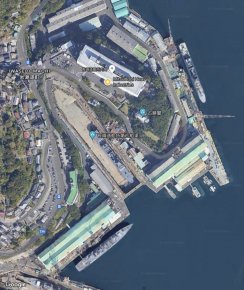Thanks Sammy. Unlike a lot of people on this forum I don't have a lot have a lot of knowledge on the technicalities of what is discussed on this group but I have a keen interest in the future direction of our defence forces and what we face in the coming years. As an outsider I try to look at the big picture and try to keep my BS detector on full all the time! Lol.
As I see it the Mogami FFM seems the best option with a 127mm gun and 32 VLS. As long as the language issue is sorted and we have the option to upgrade to CEAFAR2.
Sammy C's explanation is very informative and even without CEAFAR2 initially the FFMs will be very effective additions to the fleet if we choose them.
Whatever we get must have room and power available to expand on the capabilities of the platform.
Look what we did to the Anzacs!
As long as we have decent AAW and ASW capabilities and the ability to upgrade the ships we should be ok.
I personally think we should think beyond the planned 11 hulls and have an ongoing ship building plan in place.
Have a rolling production line of future combatants sorted out now beyond the current plans.
The Hunter AAW destroyer variant or an alternative should be talked about now, not in ten years time.
Look at what the Japanese are doing with their ASEVs and future destroyers.
Plan now as tomorrow may be too late.
Cheers buzz, a good bs detector never goes out of fashion.
My personal view is that the Mogami, either the original or the new are good platforms and would serve us well. It would be my pick of the bunch, technically and strategically, however if we ended up with one of the other three, that would still be OK.
I know the RAN is wedded to things like 9LV, however I actually think we might like the Japanese equivalent, and may actually end up wanting it more. We would adapt regardless, just as we have to earlier systems that have come and gone.
Your point on the evolution of the ANZACs is something that can go unnoticed. It is an incredibly different ship now to what it started out as (and what I served on). And we have been very successful in doing this. It is a credit to the defence organisation. Hunters and GPFs would probably get a refresh around the 10 year mark, just as the Hobarts are doing now.
I think the recent IIP from the government gave a start date to evaluate the options for the Hobart replacement by 2027. So expect it to be kicked off by then. I would be suprised if it wasn't an evolution of the Hunter.
In regards to continuous ship building, we could learn a lot from the Japanese and Koreans. Both picked baseline tier 1 and tier 2 platforms some time ago (Japan: Kongo, Murasame and Mogami for instance), and have continued to evolve them in batches over time. Same general hull and machinery, updated combat and contol systems, improved reliability/functionality/automation. A little bit longer here, a little bit fatter there. They didn't chop and change to entirely different platforms each time and wildly swing the pendulum.
The Americans did this as well with the burke, perhaps the most successful platform of all time, evolved in batches.
This consistency underpins their efficiency and ability to produce, and allows local industry to mature alongside and establish long term investment programs. Australia has set itself up for a similar strategy with the Hunter as the tier 1 and the GPF as the tier 2. Hunters 7-9 will be an evolution, as likely will GPF 7-11. There would be space to further evolve beyond this, as some of the earlier versions of each type reach end of life (consider GPFs 12-14 replacing hulls 1-3 some time around 2050).
I hope that a future government doesn't then go and upend all of this good work (I say my prayers nightly) for some short term desire, or simply because it was somebody elses idea.
If Hunters and GPFs are added to future replacement landing and amphibious craft (LHDs, LCH and LCM), patrol boats, LOCSVs and AORs (and we might get another one or two of these in the distant future), combined with a 20-25 year lifespan (no life extension upgrades) then Australia has sufficient platforms to maintain continuous ship building at two yards at the cadence currently planned for (about 18 months for each new ship at each yard).
Additionally 8 submarines, on a 3-4 year cadence also provides for a third specialised continuous submarine yard.
I see our medium term future as grim, and I would view we are going to rely on the Hunter, GPF, LOCSV and SSN programs more than we currently realise.





